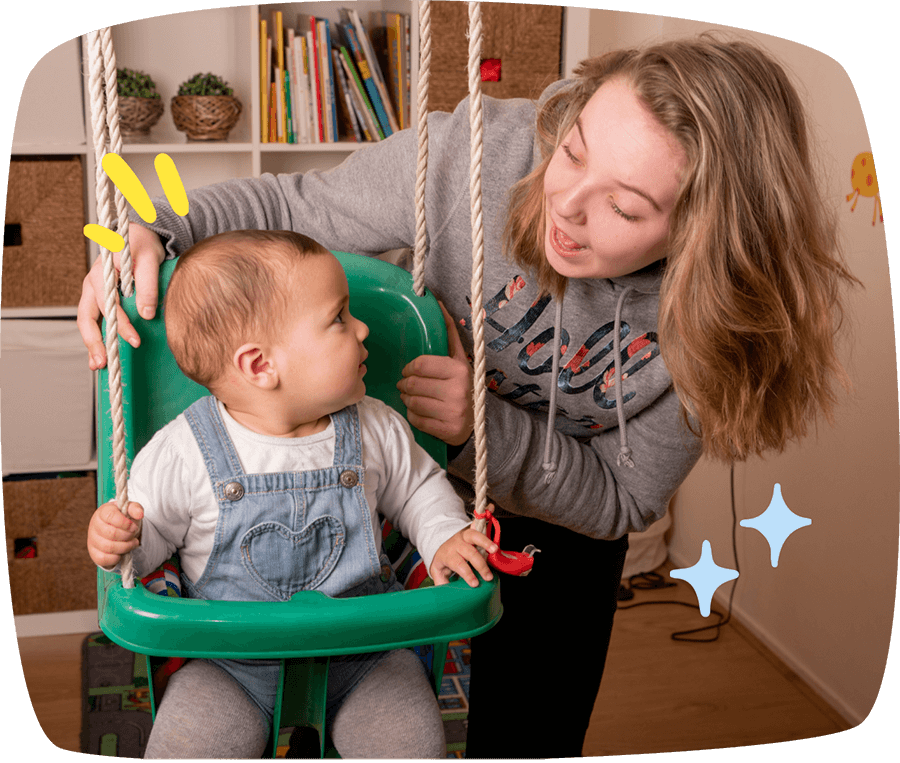Sitly lets parents and childcare providers in the same area connect with each other. Whether you’re a part-time babysitter, a full-time nanny, or a registered childminder – you’ll be able to find jobs that suit your preferences. Find out how by following our guide below.
KNOW YOUR NEEDS
When you know what you want, your search can be better defined. Decide what you are looking for in your next babysitting or nanny job by thinking about what features are important to you, and in what areas you may be willing to compromise. Ask yourself:
- What kind of family would be an ideal babysitting client?
- How many kids can I watch at the same time?
- How old are the kids I would like to babysit?
- What kinds of activities and chores can I do?
PREPARE YOUR PROFILE
The more information you add to your Sitly profile, the more you can tell parents about who you are and what kinds of babysitting or nanny services you offer. Upload a professional photo of yourself and fill in your information with all the details you want families to know. Consider adding:
- Your background and childcare experience
- Your reputation and babysitting style
- Your favorite activities to do with kids
- Your additional abilities, eg. tutoring, cleaning
- Your excitement about meeting new clients
FILTER AND FIND JOBS
Sitly shows you local families that match your profile and babysitting preferences. View all of the registered families in your area, or use filters to refine search results based on factors like distance or number of children. This way, you can set yourself up for future success without breaking a sweat.

CONTACT POTENTIAL CLIENTS
Chatting with parents beforehand is the perfect way to figure out if a family is a good fit for you. Check out the profiles of families that interest you, and send prospective clients a message introducing yourself by telling them about your babysitting experience, relevant abilities, and compatible qualifications. During your chat, you might want to ask parents:
- What days and times do you need a babysitter?
- What are you looking for in a babysitter?
- Do any extra responsibilities come with the job?
- Can we agree on an hourly babysitting rate?
SCREEN SOCIAL MEDIA
Looking up parents’ social media pages can tell you more about the family. If the job checks off enough boxes on your list, ask for the family’s surname. That way you can try to find them on Instagram or Facebook to get an idea of who they are, and to get ready for a deeper interview.

INITIATE AN INTERVIEW
A formal interview is an opportunity to get to know your new babysitting family better by meeting the parents properly. Keep it somewhat casual by offering to chat at a cafe or park, or even scheduling a short video call. Be prepared to ask about the family’s wishes and expectations, and practice answering questions like:
- How long have you worked as a babysitter or nanny?
- What do you like most about taking care of children?
- Which ages do you have the most experience with?
- What do kids like best about spending time with you?
- How do you respond when children feel sad or act out?
- What are your favorite babysitting activities to do with kids?
- Could you take the kids to their after-school activities?
- What times are you normally available for babysitting?
- Which chores around the house would you be willing to do?
CONNECT WITH THE KIDS
It’s great if you get along with the parents, but it’s even more important to hit it off with their children since that’s who you’ll be spending all of your babysitting time with. Get to know the kids and let things develop naturally; some of them will want to show you all kinds of stuff, while others may take a while to open up. If you want, you can plan to meet the whole family during the interview – or you can make a separate appointment if that feels more comfortable.
TAKE A TRIAL PERIOD
You don’t have to rush into any long-term commitments. Decide on a trial period that lets you ease into building a relationship with the family. You might want to define an initial number of times that you will babysit the kids, or maybe increase the amount of time that parents are away little by little so you can see how things go. Play it by ear – taking into account your preferences, the parents’ needs, and the kids’ temperament. Then, if everything seems to be working out, go ahead and make it official.
KEEP A CONTRACT
A written agreement can help prevent any misunderstandings between babysitters and families. Work with the parents to make up a simple baby sitting contract that clearly lays out the terms of the job. Remember to record important details, including:
- Hourly babysitting rate
- Regular working hours
- Additional required tasks
- Special instructions for kids, eg. rituals, medications, allergies

FOLLOW UP FREQUENTLY
Regular communication is key for maintaining a positive and effective relationship, both with kids and their parents. Make time to talk about how things are going – preferably without the kids present – so you can share your thoughts, questions, and advice freely.






 Services
Services